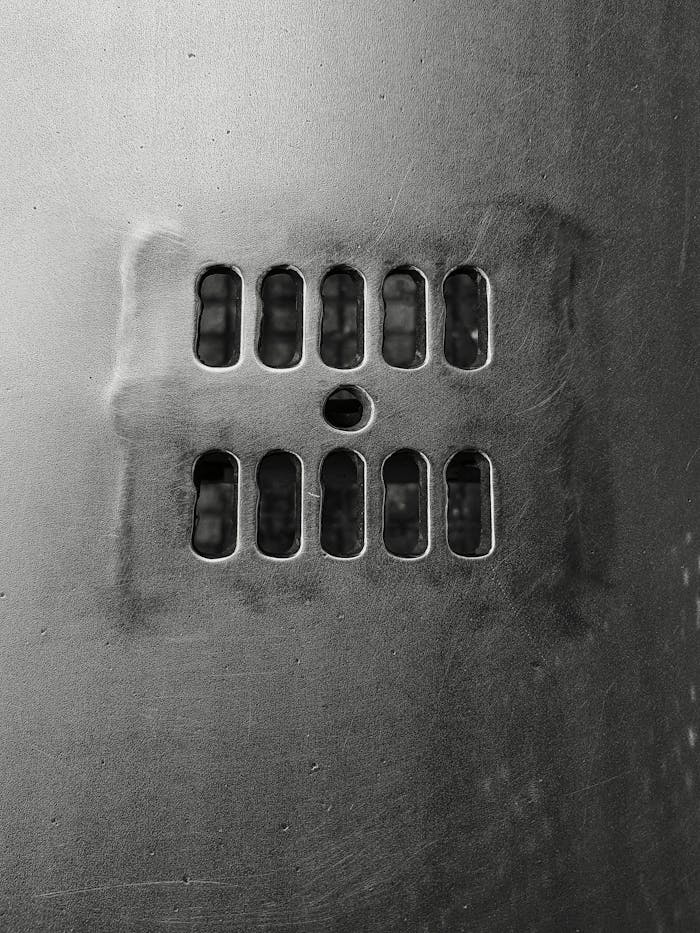
Explore & Play
Discover interesting topics and solve the accompanying crossword puzzle.
Gutter Crossword | Famous Gutters and Drainage Systems
Table of Contents
Feel free to start by playing the Gutter crossword to test your knowledge on famous drainage systems worldwide. If you’re not familiar with the topic, you can first read the article to gain more insights and then return to the crossword to challenge yourself with the newfound information.
Gutter Crossword
You can either fill in the crossword puzzle directly on this page or click the button in the bottom right corner to print it for free.

Exploring Historic and Modern Drainage Systems Around the World
I. Introduction: The Role of Drainage Systems in Shaping Cities
Drainage systems have played a vital role in the growth and development of cities throughout history, shaping everything from daily life to infrastructure and even urban design. These systems, designed to manage water flow, prevent flooding, and support sanitation, have been a critical part of urban planning for millennia. Cities without effective drainage systems face numerous risks, from health hazards to damaged infrastructure, making gutters, canals, and sewers essential components of city life.
Cities like Venice, New York, and Cairo showcase different approaches to drainage, all of which highlight the unique challenges faced by urban planners in each region. The role of drainage systems extends beyond basic functionality—they are integral to the urban environment, influencing everything from architecture to environmental sustainability. This article will explore some of the most famous and influential drainage systems from around the world, examining their historical development, innovative designs, and future adaptations to modern challenges.
As we journey through these systems, we’ll also delve into a crossword puzzle that highlights the unique and diverse gutter systems worldwide. Let’s begin by exploring the history of drainage systems and their role in shaping urban life.
II. The History of Drainage Systems: From Ancient Innovations to Modern Masterpieces
The development of drainage systems has evolved over thousands of years, with innovations that reflect the needs of each era and region. Ancient civilizations understood the importance of managing water, and they devised early solutions to address flooding, waste disposal, and sanitation.
A. Early Drainage Solutions (Ancient Civilizations)
In ancient Mesopotamia, Egypt, and Rome, rudimentary drainage systems were developed to manage water and waste. For example, the ancient Egyptians constructed canals along the Nile to channel floodwaters and improve irrigation. These canals were vital to agricultural production, and many of them doubled as early drainage systems. Similarly, in ancient Rome, the Cloaca Maxima, one of the world’s earliest sewage systems, was built to divert waste and excess water away from the city.
The Romans also constructed vast networks of public baths and latrines, which were connected to the Cloaca Maxima system. The importance of drainage in these early civilizations cannot be overstated—without them, the cities would not have been able to thrive.
B. Middle Ages and Renaissance Period
As urban populations grew during the Middle Ages, so did the need for efficient drainage systems. During this time, cities like Paris began building more sophisticated sewer systems. Paris’s medieval streets were often raised to allow for better water flow beneath them, and many of the city’s first public drainage systems were constructed at this time.
In the Renaissance period, drainage systems in cities like Florence and Venice were designed with more advanced engineering techniques. Venice’s canal system, for instance, not only served as transportation routes but also as a drainage network, guiding water away from the city’s foundations to prevent flooding.
C. Transition to Modern Times
The industrial revolution in the 19th century brought about a significant shift in how cities approached drainage. Growing populations and rapid urbanization required new methods of managing water. In London, Joseph Bazalgette’s engineering masterpiece—the construction of a vast underground sewer system—helped protect the city from flooding and waterborne diseases like cholera. This project, completed in the mid-1800s, revolutionized drainage infrastructure and set the standard for cities worldwide.
By the 20th century, drainage systems were no longer limited to the wealthy or privileged parts of a city. Public works projects in cities like New York and Tokyo ensured that modern stormwater drainage systems became a necessity for everyone, regardless of social class.
III. Famous Drainage Systems Around the World: Case Studies
Across the globe, various cities have developed unique drainage solutions to manage water flow, prevent floods, and shape urban environments. Let’s look at some of the most famous drainage systems from around the world.
A. The Canals of Venice
Venice is famous for its winding canals, which serve as both transportation routes and drainage solutions. The city’s canals are critical for managing the flow of water, especially given its unique position as a city built on water. The canals help divert excess water away from the city’s buildings, preventing flooding and preserving Venice’s historical structures. The most iconic canals, including the Grand Canal, serve as both tourist attractions and vital parts of the city’s drainage system.
The ingenuity of Venice’s drainage lies in the city’s ability to integrate the canals with the urban design, ensuring that water flows efficiently and doesn’t compromise the foundations of the buildings. However, rising sea levels due to climate change present a significant threat to the city’s drainage infrastructure, prompting ongoing efforts to adapt and preserve these historical systems.
B. London’s Victorian Sewers
London’s sewer system, built by the visionary engineer Joseph Bazalgette, is a marvel of Victorian-era engineering. Constructed in the mid-1800s, this system was designed to address the frequent outbreaks of cholera in the city. Bazalgette’s work transformed London’s approach to public sanitation, creating a network of underground tunnels that efficiently managed both stormwater and wastewater.
This system, which covers much of central London, is still in use today, a testament to its brilliant design. It not only prevents flooding but also helped control the spread of disease, marking a critical turning point in urban planning.
C. The Stormwater Management of New York
New York City, with its dense population and vast urban sprawl, faces significant challenges related to stormwater runoff. The city’s drainage system has evolved to handle these issues, incorporating advanced technologies like underground storage tunnels to capture excess rainwater during storms. The system also integrates green infrastructure, such as green roofs and permeable pavements, to absorb water naturally and reduce runoff.
New York’s stormwater management system is constantly being upgraded to accommodate the city’s growing population and to address the increasing frequency of extreme weather events due to climate change.
D. The Gutter System in Tokyo
Tokyo is one of the world’s most densely populated cities, and managing stormwater runoff has long been a priority for urban planners. The city’s drainage system includes a series of massive underground tunnels designed to collect and store stormwater. These tunnels are part of a larger network that ensures Tokyo can handle heavy rainfall and prevent flooding, which is crucial for protecting its infrastructure and people.
Tokyo’s drainage system is a prime example of modern engineering, using state-of-the-art technology to maintain efficiency and reliability, even during extreme weather conditions.
E. Paris’s Haussmannian Drainage Plan
In the 19th century, Paris underwent a complete urban transformation under the direction of Baron Haussmann. As part of this grand redesign, Paris’s drainage system was overhauled to improve sanitation and flood prevention. Haussmann’s plan introduced new sewer networks that ran under the newly constructed boulevards, ensuring that wastewater was efficiently carried away from the city’s heart.
Paris’s drainage system, still operational today, is not only functional but also an iconic part of the city’s infrastructure, hidden beneath the elegant streets of the city.
F. The Role of Gutters in Cairo’s Ancient and Modern Design
Cairo, with its ancient history and modern challenges, has always had to contend with water management. The ancient Egyptians constructed intricate systems of canals and gutters to manage the floodwaters of the Nile. In modern times, Cairo continues to rely on drainage systems that have been updated to handle the city’s rapid urbanization and population growth.
Today, Cairo’s drainage system includes a mix of ancient methods and modern infrastructure, working together to mitigate the risks of flooding and manage the city’s water needs.
IV. Coastal and Flood-Prone Cities: Adapting Drainage Systems to Changing Climates
As cities along the coasts and rivers face increased flood risks due to climate change, drainage systems have adapted to meet new challenges. Coastal cities, in particular, have invested heavily in innovative drainage solutions to protect their infrastructure and residents.
A. Coastal Challenges: How Copenhagen Manages Rising Sea Levels
Copenhagen, a city vulnerable to rising sea levels, has been a leader in developing sustainable drainage solutions. The city has implemented a variety of strategies, including green roofs, rainwater harvesting, and underground storage systems, to handle increased rainfall and prevent flooding. Copenhagen’s commitment to sustainability has made it a model for other cities facing similar challenges.
B. Protecting Low-Lying Cities: Amsterdam’s Canals and Beyond
Amsterdam is known for its canals, which have long been integral to the city’s drainage system. These canals are designed to control water flow, especially during periods of heavy rainfall. To adapt to climate change, Amsterdam is expanding its green infrastructure and improving the resilience of its drainage systems to handle future flooding risks.
C. Sydney’s Comprehensive Stormwater System
Sydney is another coastal city that has developed comprehensive systems for managing stormwater runoff. The city’s drainage system integrates natural elements, such as wetlands and water-sensitive urban design, to manage water efficiently while protecting the environment. Sydney’s approach highlights the importance of balancing urban development with environmental sustainability.
V. Sustainable Drainage Solutions: Innovative Engineering in the 21st Century
With urban populations growing and climate challenges intensifying, sustainable drainage systems have become a key focus of modern engineering. Cities around the world are reimagining how they manage water, using innovative designs and technologies to ensure sustainability and efficiency.
A. Green Infrastructure: From Stockholm to Singapore
Cities like Stockholm and Singapore have embraced green infrastructure to manage stormwater and reduce runoff. Green roofs, permeable pavements, and urban wetlands are just a few examples of how these cities integrate nature into their drainage systems. These solutions help absorb excess water while providing additional environmental benefits, such as improved air quality and reduced heat island effects.
B. Smart Drainage Systems: The Future of Urban Water Management
Smart drainage systems, using sensors and real-time data, represent the future of urban water management. Cities like Los Angeles and London are already experimenting with these systems, which allow for more precise control over water flow and help prevent flooding by providing data-driven insights into potential issues. These systems also enable cities to adjust their drainage strategies in response to changing weather patterns.
VI. Conclusion: How Drainage Systems Will Shape Future Cities
The evolution of drainage systems reflects not just advances in engineering but also the changing needs and priorities of urban societies. From ancient civilizations to modern cities, effective water management is essential for urban survival. As climate change and population growth continue to put pressure on cities, drainage systems will play an increasingly critical role in shaping the future of urban design.
Cities around the world are embracing innovative technologies and sustainable practices to adapt to these challenges, ensuring that their drainage systems are not only effective but also environmentally friendly. The future of drainage systems is bright, and with continued advancements, cities will be better equipped to manage water and protect their inhabitants.
Play the Crossword Puzzle Now!
Before you go, take a moment to challenge yourself with our crossword puzzle! It’s a fun way to test your knowledge of drainage systems worldwide and learn about the fascinating engineering feats that keep our cities safe and dry.
Share to...
I hope you enjoy the content.
Want to receive our daily crossword puzzle or article? Subscribe!
You may also be interested in
Share to…
Want to receive our daily crossword puzzle?
-
Jigsaw Puzzles
Art Nouveau Jigsaw Puzzle with Playful Dog in Scenic Landscape 250 | 300 | 500 Pieces
kr 348,00 – kr 439,00Price range: kr 348,00 through kr 439,00 Select options This product has multiple variants. The options may be chosen on the product page -
Jigsaw Puzzles
Art Nouveau Jigsaw Puzzle with Betta Fish in Lush Garden Scene 250 | 300 | 500 Pieces
kr 348,00 – kr 439,00Price range: kr 348,00 through kr 439,00 Select options This product has multiple variants. The options may be chosen on the product page -
Jigsaw Puzzles
Zodiac Ink Art Puzzle: The Playful Monkey 250 | 300 | 500 Pieces
kr 348,00 – kr 439,00Price range: kr 348,00 through kr 439,00 Select options This product has multiple variants. The options may be chosen on the product page

















